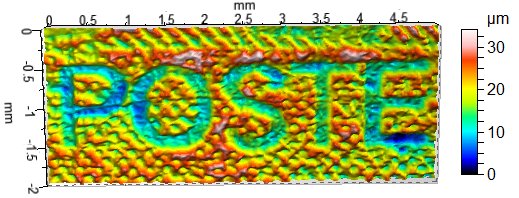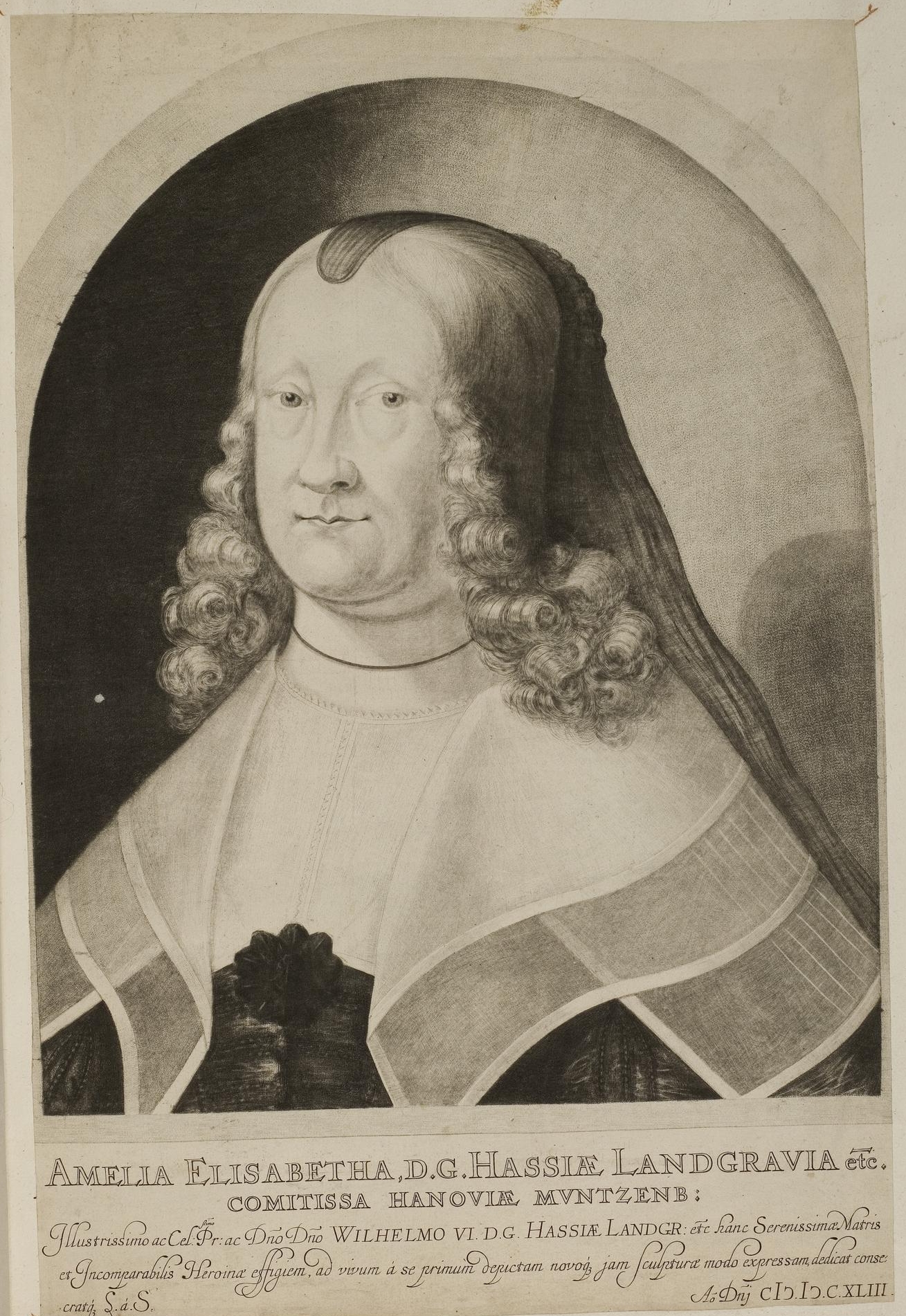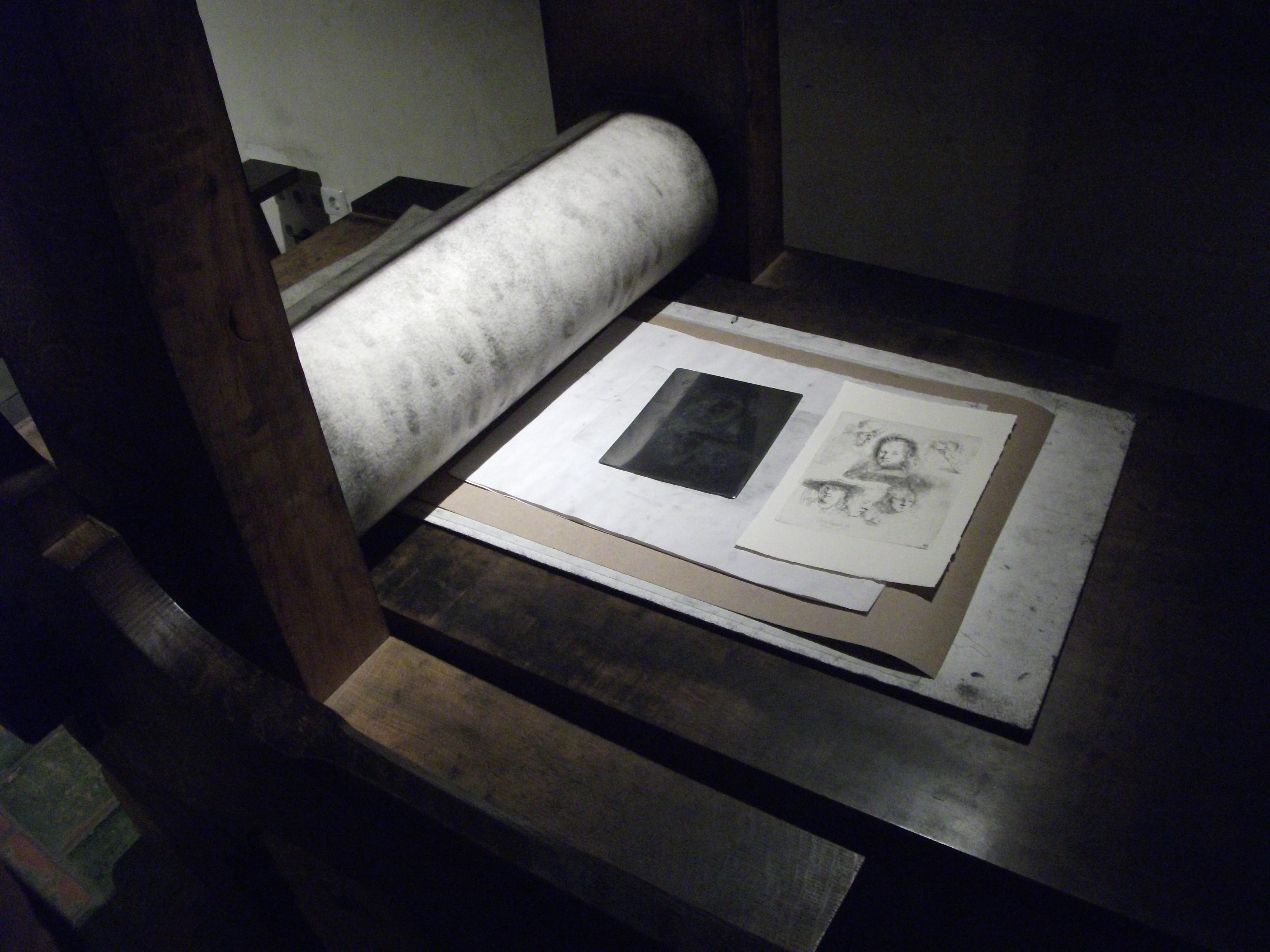|
Printmaking
Printmaking is the process of creating artworks by printing, normally on paper, but also on fabric, wood, metal, and other surfaces. "Traditional printmaking" normally covers only the process of creating prints using a hand processed technique, rather than a photographic reproduction of a visual artwork which would be printed using an electronic machine ( a printer); however, there is some cross-over between traditional and digital printmaking, including risograph. Except in the case of monotyping, all printmaking processes have the capacity to produce identical multiples of the same artwork, which is called a print. Each print produced is considered an "original" work of art, and is correctly referred to as an "impression", not a "copy" (that means a different print copying the first, common in early printmaking). However, impressions can vary considerably, whether intentionally or not. Master printmakers are technicians who are capable of printing identical "impressions" by ... [...More Info...] [...Related Items...] OR: [Wikipedia] [Google] [Baidu] |
Collagraph
Collagraphy (sometimes spelled collography) is a printmaking process introduced in 1955 by Glen Alps in which materials are applied to a rigid substrate (such as paperboard or wood). The word is derived from the Greek word ''koll'' or ''kolla'', meaning glue, and ''graph'', meaning the activity of drawing. The plate can be intaglio-inked, inked with a roller or paintbrush or some combination thereof. Ink or pigment is applied to the resulting collage and the board is used to print onto paper or another material using either a printing press or various hand tools. The resulting print is termed a collagraph. Substances such as carborundum, acrylic texture mediums, sandpapers, textiles, bubble wrap, string or other fibres, cut card, leaves and grass can all be used in creating the collagraph plate. In some instances, leaves can be used as a source of pigment by rubbing them onto the surface of the plate. Different tonal effects and vibrant colours can be achieved with the technique ... [...More Info...] [...Related Items...] OR: [Wikipedia] [Google] [Baidu] |
Intaglio (printmaking)
Intaglio ( ; ) is the family of printing and printmaking techniques in which the image is incised into a surface and the incised line or sunken area holds the ink. It is the direct opposite of a relief print where the parts of the matrix that make the image stand ''above'' the main surface. Normally, copper or in recent times zinc sheets, called plates, are used as a surface or matrix, and the incisions are created by etching, engraving, drypoint, aquatint or mezzotint, often in combination. Collagraphs may also be printed as intaglio plates. After the decline of the main relief technique of woodcut around 1550, the intaglio techniques dominated both artistic printmaking as well as most types of illustration and popular prints until the mid 19th century. Process In intaglio printing, the lines to be printed are cut into a metal (e.g. copper) plate by means either of a cutting tool called a burin, held in the hand – in which case the process is called ''engraving''; or t ... [...More Info...] [...Related Items...] OR: [Wikipedia] [Google] [Baidu] |
Etching
Etching is traditionally the process of using strong acid or mordant to cut into the unprotected parts of a metal surface to create a design in intaglio (incised) in the metal. In modern manufacturing, other chemicals may be used on other types of material. As a method of printmaking, it is, along with engraving, the most important technique for old master prints, and remains in wide use today. In a number of modern variants such as microfabrication etching and photochemical milling it is a crucial technique in much modern technology, including circuit boards. In traditional pure etching, a metal plate (usually of copper, zinc or steel) is covered with a waxy ground which is resistant to acid. The artist then scratches off the ground with a pointed etching needle where the artist wants a line to appear in the finished piece, exposing the bare metal. The échoppe, a tool with a slanted oval section, is also used for "swelling" lines. The plate is then dipped in a bath of aci ... [...More Info...] [...Related Items...] OR: [Wikipedia] [Google] [Baidu] |
Mezzotint
Mezzotint is a monochrome printmaking process of the '' intaglio'' family. It was the first printing process that yielded half-tones without using line- or dot-based techniques like hatching, cross-hatching or stipple. Mezzotint achieves tonality by roughening a metal plate with thousands of little dots made by a metal tool with small teeth, called a "rocker". In printing, the tiny pits in the plate retain the ink when the face of the plate is wiped clean. This technique can achieve a high level of quality and richness in the print. ''Mezzotint'' is often combined with other ''intaglio'' techniques, usually etching and engraving. The process was especially widely used in England from the eighteenth century, to reproduce portraits and other paintings. It was somewhat in competition with the other main tonal technique of the day, aquatint. Since the mid-nineteenth century it has been relatively little used, as lithography and other techniques produced comparable results more easil ... [...More Info...] [...Related Items...] OR: [Wikipedia] [Google] [Baidu] |
Linocut
Linocut, also known as lino print, lino printing or linoleum art, is a printmaking technique, a variant of woodcut in which a sheet of linoleum (sometimes mounted on a wooden block) is used for a relief surface. A design is cut into the linoleum surface with a sharp knife, V-shaped chisel or gouge, with the raised (uncarved) areas representing a reversal (mirror image) of the parts to show printed. The linoleum sheet is inked with a roller (called a brayer), and then impressed onto paper or fabric. The actual printing can be done by hand or with a printing press. Technique Since the material being carved has no directional grain and does not tend to split, it is easier to obtain certain artistic effects with lino than with most woods, although the resultant prints lack the often angular grainy character of woodcuts and engravings. Lino is generally diced, much easier to cut than wood, especially when heated, but the pressure of the printing process degrades the plate faster and ... [...More Info...] [...Related Items...] OR: [Wikipedia] [Google] [Baidu] |
Monotyping
Monotyping is a type of printmaking made by drawing or painting on a smooth, non-absorbent surface. The surface, or matrix, was historically a copper etching plate, but in contemporary work it can vary from zinc or glass to acrylic glass. The image is then transferred onto a paper by pressing the two together, using a printing-press, brayer, baren or by techniques such as rubbing with the back of a wooden spoon or the fingers which allow pressure to be controlled selectively. Monotypes can also be created by inking an entire surface and then, using brushes or rags, removing ink to create a subtractive image, e.g. creating lights from a field of opaque colour. The inks used may be oil or water-based. With oil-based inks, the paper may be dry, in which case the image has more contrast, or the paper may be damp, in which case the image has a 10 percent greater range of tones. Monotyping produces a unique print, or monotype; most of the ink is removed during the initial pressing. A ... [...More Info...] [...Related Items...] OR: [Wikipedia] [Google] [Baidu] |
Lithography
Lithography () is a planographic method of printing originally based on the immiscibility of oil and water. The printing is from a stone (lithographic limestone) or a metal plate with a smooth surface. It was invented in 1796 by the German author and actor Alois Senefelder and was initially used mostly for musical scores and maps.Meggs, Philip B. A History of Graphic Design. (1998) John Wiley & Sons, Inc. p 146 Carter, Rob, Ben Day, Philip Meggs. Typographic Design: Form and Communication, Third Edition. (2002) John Wiley & Sons, Inc. p 11 Lithography can be used to print text or images onto paper or other suitable material. A lithograph is something printed by lithography, but this term is only used for fine art prints and some other, mostly older, types of printed matter, not for those made by modern commercial lithography. Originally, the image to be printed was drawn with a greasy substance, such as oil, fat, or wax onto the surface of a smooth and flat limestone plat ... [...More Info...] [...Related Items...] OR: [Wikipedia] [Google] [Baidu] |
Woodcut
Woodcut is a relief printing technique in printmaking. An artist carves an image into the surface of a block of wood—typically with gouges—leaving the printing parts level with the surface while removing the non-printing parts. Areas that the artist cuts away carry no ink, while characters or images at surface level carry the ink to produce the print. The block is cut along the wood grain (unlike wood engraving, where the block is cut in the end-grain). The surface is covered with ink by rolling over the surface with an ink-covered roller (brayer), leaving ink upon the flat surface but not in the non-printing areas. Multiple colors can be printed by keying the paper to a frame around the woodblocks (using a different block for each color). The art of carving the woodcut can be called "xylography", but this is rarely used in English for images alone, although that and "xylographic" are used in connection with block books, which are small books containing text and images in t ... [...More Info...] [...Related Items...] OR: [Wikipedia] [Google] [Baidu] |
Goya - No Hay Quien Los Socorra (Nobody Can Help Them)
Francisco José de Goya y Lucientes (; ; 30 March 174616 April 1828) was a Spanish romantic painter and printmaker. He is considered the most important Spanish artist of the late 18th and early 19th centuries. His paintings, drawings, and engravings reflected contemporary historical upheavals and influenced important 19th- and 20th-century painters. Goya is often referred to as the last of the Old Masters and the first of the moderns. Goya was born to a middle-class family in 1746, in Fuendetodos in Aragon. He studied painting from age 14 under José Luzán y Martinez and moved to Madrid to study with Anton Raphael Mengs. He married Josefa Bayeu in 1773. Their life was characterised by a series of pregnancies and miscarriages, and only one child, a son, survived into adulthood. Goya became a court painter to the Spanish Crown in 1786 and this early portion of his career is marked by portraits of the Spanish aristocracy and royalty, and Rococo-style tapestry cartoons design ... [...More Info...] [...Related Items...] OR: [Wikipedia] [Google] [Baidu] |
Aquatint
Aquatint is an intaglio printmaking technique, a variant of etching that produces areas of tone rather than lines. For this reason it has mostly been used in conjunction with etching, to give both lines and shaded tone. It has also been used historically to print in colour, both by printing with multiple plates in different colours, and by making monochrome prints that were then hand-coloured with watercolour. It has been in regular use since the later 18th century, and was most widely used between about 1770 and 1830, when it was used both for artistic prints and decorative ones. After about 1830 it lost ground to lithography and other techniques. There have been periodic revivals among artists since then. An aquatint plate wears out relatively quickly, and is less easily reworked than other intaglio plates. Many of Goya's plates were reprinted too often posthumously, giving very poor impressions. Among the most famous prints using the aquatint technique are the major serie ... [...More Info...] [...Related Items...] OR: [Wikipedia] [Google] [Baidu] |
Edition (printmaking)
In printmaking, an edition is a number of prints struck from one plate, usually at the same time. This may be a ''limited edition'', with a fixed number of impressions produced on the understanding that no further impressions (copies) will be produced later, or an ''open edition'' limited only by the number that can be sold or produced before the plate wears. Most modern artists produce only limited editions, normally signed by the artist in pencil, and numbered as say 67/100 to show the unique number of that impression and the total edition size. Original or reproduction? An important and often confused distinction is that between editions of original prints, produced in the same medium as the artist worked (e.g., etching, or lithography), and reproduction prints (or paintings), which are photographic reproductions of the original work, essentially in the same category as a picture in a book or magazine, though better printed and on better paper. These may be marketed as "limi ... [...More Info...] [...Related Items...] OR: [Wikipedia] [Google] [Baidu] |
Master Printmaker
Master printmakers or master printers are specialized technicians who hand-print editions of an artist's or printmaker's print-based artwork. Master printmakers often own and/or operate their own printmaking studio or print shop. Business activities of a Master printshop may include: publishing and printing services, educational workshops or classes, mentorship of artists, and artist residencies. Training for master printmakers varies by technique, geography, and culture. Master printmakers are almost always trained by other master printmakers. The Tamarind Institute is one formal institution mandated to train master lithographers, located in New Mexico. In the 20th century in Britain there was a federation of master printers called the ''British Printing Industries Federation'', renamed the ''British Federation of Master Printers'' (BFMP) in the 1930s and then again renamed the ''British Printing Industries Federation'' in the 1970s. Notable people in the US Contemporary maste ... [...More Info...] [...Related Items...] OR: [Wikipedia] [Google] [Baidu] |






.jpg)



